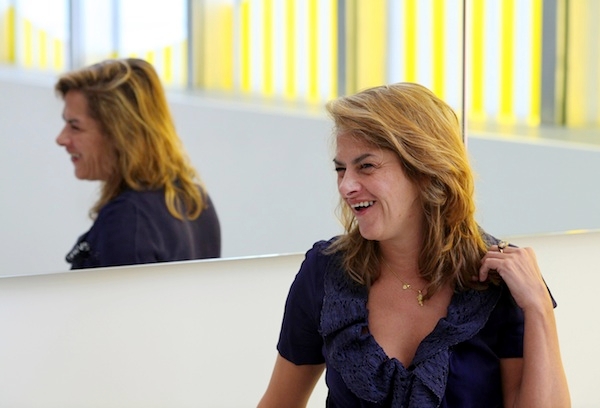Front Row is one of those Radio 4 programmes that it’s too easy to take for granted. It’s on every weekday, all year round, at the same peak listening time (after The Archers), with a team of presenters, John Wilson, Mark Lawson and Kirsty Lang, who have become such a reliable fixture they’re almost like chums. If you’re lucky enough to catch it regularly you’ll know its mix of interviews, reviews and conversations about buildings, books, pictures, poems, galleries, anything that’s remotely creative. Sometimes the reviewers are awfully pretentious, sometimes what’s being talked about is way too weird or winsome, sometimes it’s a reminder of just how silly, time-wasting and empty ‘creative’ art can be. But mostly it’s a sanctuary of savvy knowledge with odd moments of sheer inspiration. Where else on radio or TV would you find an extended interview with the elusive Anne Tyler, with Tom Jones, Darcey Bussell or Zaha Hadid? Or discover on one night what we’re exporting to China culture-wise and on the next the reasons why Sarah Brightman wants to become an astronaut?
The flexible format, moving from round-table discussion to single-person interview, to on-the-road reports and in-the-studio ‘live’ music, means that it always sounds fresh and enthusiastic. New voices continually reinvigorate the conversation; not something that happened on BBC2’s arts review, now for the chop. Talking ‘live’ on radio for five or so minutes is a much less intimidating prospect than appearing on TV, which means the producers can risk inviting someone who’s never been on air before to join the discussion, constantly refreshing the reservoir of opinion. Front Row’s regular reviewers are kept on their toes by this, never daring to get stale or blasé; while the presenters have been around for so long they can smell a phoney a mile away.
Now at last, after 15 years of arts reporting, Front Row is being promoted to centre-stage, with a TV ad campaign and the promise of a leading role in Radio 4’s year of culture. Each evening for the next few months, 75 ‘leading creative figures’ will be telling us, briefly, about the piece of work that has most inspired their own — whether it be a poem, a painting, a song, a building, a novel, anything that has been ‘made’ which has had an impact on them. The promise of this ‘Cultural Exchange’ is not just to hear an opinion, but also to inspire debate about works not previously well known and to create new thoughts about the very familiar.
Inevitably, perhaps, the honour of being the first of these cultural punters was given to the trendy artist Tracey Emin. How good she is as a conceptual artist, let alone as a draughtsman, is a matter for debate. But there’s no denying her gift for creating headlines or controversy. Her choice, though, was surprisingly conservative: a painting by Vermeer, who is undeniably up there with the gods of art. Needless to say, Emin couldn’t resist giving us an anything but a conservative take on his work.
Her particular eye has fallen on Vermeer’s ‘Lady Writing a Letter with Her Maid’, in which the lady sits at a table set in a dark, brocaded room, writing a letter with intense concentration. Behind her stands another woman, in much plainer attire and so assumed to be her maid, looking out to something, or someone, through an unopened window.
Emin began by telling us how much she admires Vermeer for painting women ‘doing things’, like writing, playing music, having singular thoughts, but also usually ‘away’ from their husbands, and often breaking down class barriers by appearing to befriend their servants, the lower orders. Mark Lawson tried to bring her back to the painting under scrutiny. ‘She’s committing adultery,’ he told us, much to Emin’s annoyance. ‘No. Let me talk about that,’ she told him, bossily.
‘To me,’ she continued, ‘it’s blatantly obvious. All the signifiers. All the symbols… it’s actually about the class system. The fact is she has confided in her maid. The maid is her confidante and friend.’ So far, so uncontroversial. But then she said, ‘The relationship is about the two women, not just about the affair… There’s another Vermeer painting where it looks like there’s a sexual tension between the lady and her maid. That’s much more interesting,’ she says. Now there’s a surprise. Emin looking for, and finding, lesbian sex in Vermeer. The way the maid’s arms are folded, she added, tells us that she’s keeping a secret. Maybe the lady is actually saying, ‘I’m pregnant.’
This was less about the ‘cultural exchange’ we had been promised and more about Emin’s view of life, rather than art. What did she learn from Vermeer? How did he inspire her? What might we learn from him? Emin’s choice was more revealing for what she didn’t say about it than for what she did.






Comments